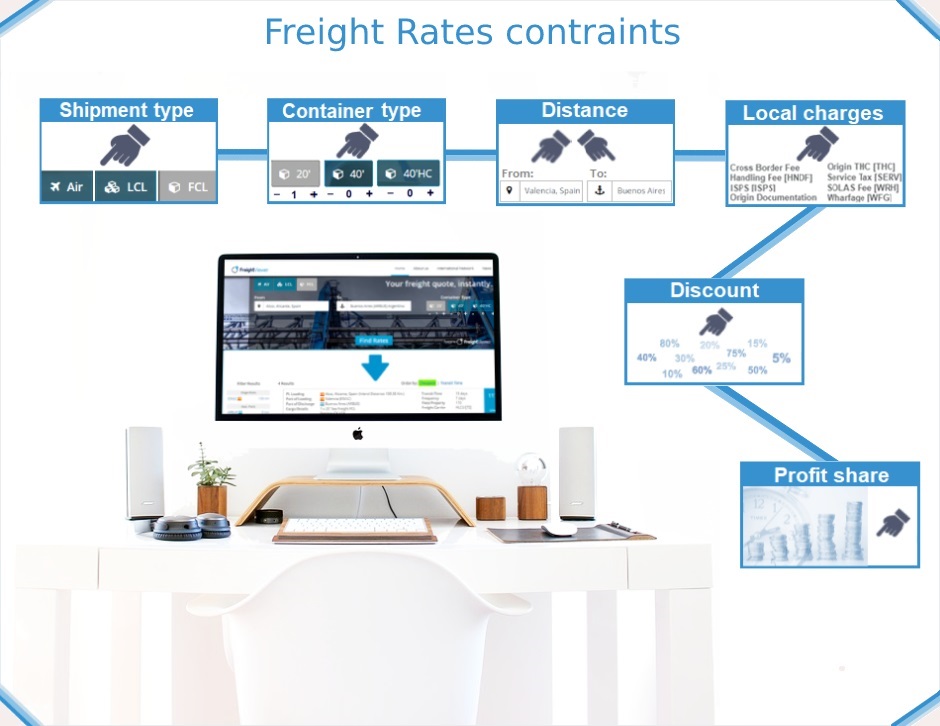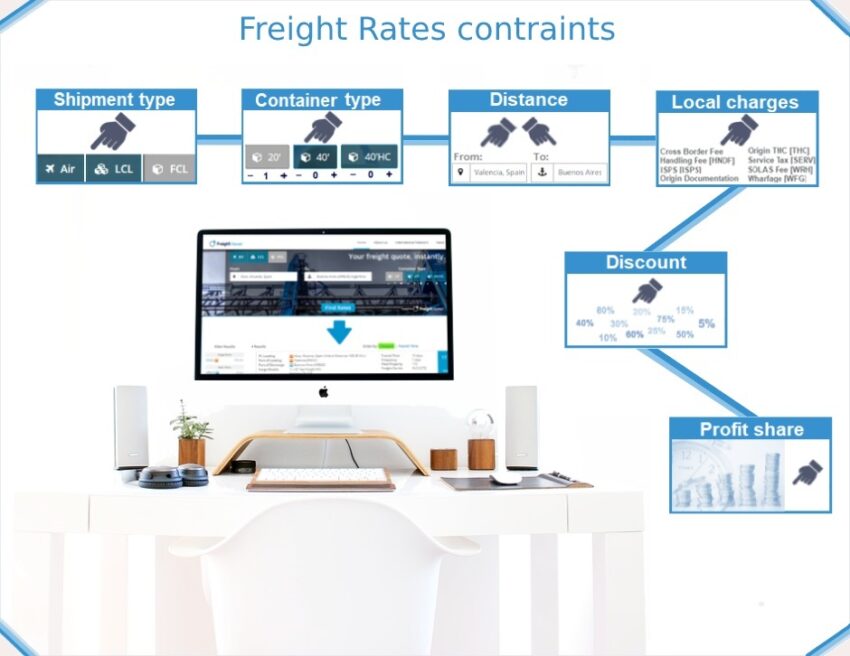The ongoing delays and blank sailings, the container shortage and lack of capacity, along with the rising demand for ocean freight from Asia to the USA have resulted in soaring freight rates. The increasing sea freight rates and the container crisis have generated a global supply chain disruption across industries. This has had a considerable impact on the sea freight shipping industry and independent freight forwarders are trying their best to deal with this problem. In today’s post, we will talk about the ongoing problem of rising freight rates and a few tips for independent freight forwarders to deal with it.
Reasons behind the soaring sea freight rates
-
The Pandemic
The lockdown in China and eventually in the rest of the world also contributed to an economic lockdown. For example, the flow of shipments was restricted because of the closure of the factories. Additionally, all the major oil-producing countries drastically reduced their production during the pandemic. This led to a demand-supply imbalance that pushed up the prices. While crude oil prices were hovering around US$ 35 per barrel until recently, they are currently more than US$ 55 per barrel.
In the meantime, the shortage of crew at the ports led to several blank sailings. Moreover, the increased consumer demands and the e-commerce boom contributed to an acute space shortage and capacity crunch. As stated by Vincent Clerc, the CEO of Maersk, “We hadn’t foreseen just how Covid would be able to change consumer patterns… People use a much, much higher portion of their wages on goods.” It goes without saying that the container shortage is one of the most important reasons for the rising ocean freight rates. Lastly, the pandemic-related disruption of the air cargo sector put tremendous pressure on the sea freight shipping industry. As a result, there was a cumulative effect on the turnaround time of the empty containers.
-
Lack of alternatives
Presently, there’s not much alternative to ocean freight that will enable forwarders to ship goods cost-effectively. The limited air capacity has added to the problem. The travel restrictions have lowered the number of passenger planes that previously used to carry a substantial cargo volume in their belly holds.

-
Overuse of split shipments
E-commerce companies that regularly send a vast volume of sea freight shipments have been using split shipment for several years now. This is because their cargoes need to be collected from inventories across multiple locations. They are required to break the orders into suborders, especially, if it pertains to separate categories for optimizing the delivery speed. Lastly, due to the lack of space for an entire shipment on planes and a single truck, the cargoes are packed in separate boxes and shipped individually. Split shipments have become the order of the day because of the e-commerce boom. Moreover, the e-commerce companies that are shipping cargoes all over the world are also in favour of split shipment. The increased number of shipments results in a higher shipping price that ends up becoming a rather costly affair.
-
Equipment shortage
The strong increase in demand for goods, took the ports, carriers, and shippers by surprise. As per the UNCTAD policy brief, ”The increase in demand was stronger than expected and not met with a sufficient supply of shipping capacity…Empty boxes were left in places where they were not needed, and repositioning had not been planned for.” Moreover, the shortage of workforce because of the pandemic resulted in a chassis shortage. For example, in the USA, the boxes are generally collected from the dock and then moved inland. However, it was taking a long time for the boxes to return to the docks from the consignee’s sites. The shortage of crew at both ends was obviously responsible for this situation.
The shipping companies are making the best of this situation and earning a handsome profit. Denis Choumert, the President of the European Shippers’ Council puts it this way- “Ongoing service unreliability, coupled with the record profits of shipping companies at times of crisis, clearly depicts a seriously disrupted market and demonstrates that carriers have been passing tremendous hikes on spot rates, imposing heavy surcharges above the fixed-term contractual rates.”
-
Additional factors
Other than the points mentioned above, several other factors are contributing to the increasing freight rates. Moreover, when the top carriers have taken major steps there is a ripple effect in the entire sector. The multinational carriers have increased their prices to cope with the incurred losses which have inflated the overall market price.
How independent freight forwarders can deal with the increased freight rates
-
Plan your shipments in advance
| The most foolproof way to cope with the excessive freight rates is to plan your shipments in advance. This will allow you to avoid paying surcharges and delays, and avail the early bird advantages. Using digitized freight booking platforms will help you predict the rates in advance and keep you aware of the latest trends. |  |
-
Consolidate relationships with your carrier
Instead of changing your carrier with every new shipment, you need to work on fostering a good relationship with your current carrier. This strategic long-term relationship can be a very effective way of getting a better price. Most reliable carriers try to do their best to retain their regular clients. Additionally, going for a long-term contract will allow you to lock in a cheaper rate. As a loyal client, you will also obtain several other benefits that will enhance your operational efficiency and reduce your expenses.
-
Use the right mode of shipment
Yet another effective way of reducing your forwarding cost is to carefully consider your mode of shipment. Sea freight forwarders must carefully consider the pros and cons of FCL or LCL shipments according to the nature of the cargo. Moreover, it is also a good idea to get quotations from several carriers before choosing one. This is because LCL shipments involve multiple charges when compared to FCL. However, if you have bulk cargo to ship, then FCL is perhaps the best option. You can even optimize your FCL shipment by selecting the right container for the kind of cargo. For example, 20′ containers are ideal for weight-based shipment while 40′ containers are ideal for voluminous shipments.
-
The use of technology can help with the problem
The use of digital platforms can somewhat mitigate this problem of the sea freight shipping industry. Presently there is a lack of transparency and visibility among the various stakeholders in the shipping process. Digitizing the shared operations and the use of collaborative tools can increase effectiveness without taking a toll on the expenses. Moreover, data-driven insights will help to create a resilient supply chain. It will keep the stakeholders updated with all the latest happenings in the sector. The systematic adoption of technology will usher in a change in which the sea freight shipping industry functions.


